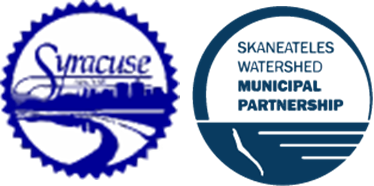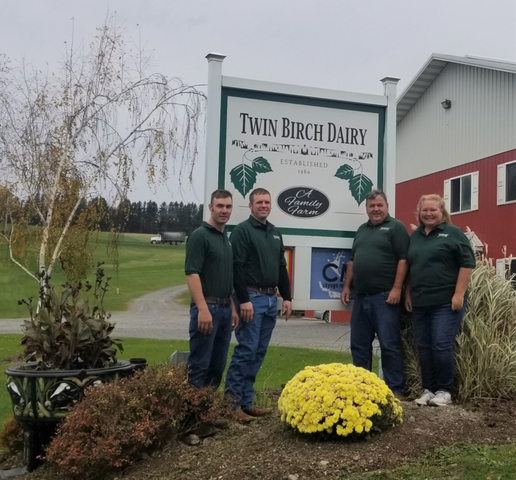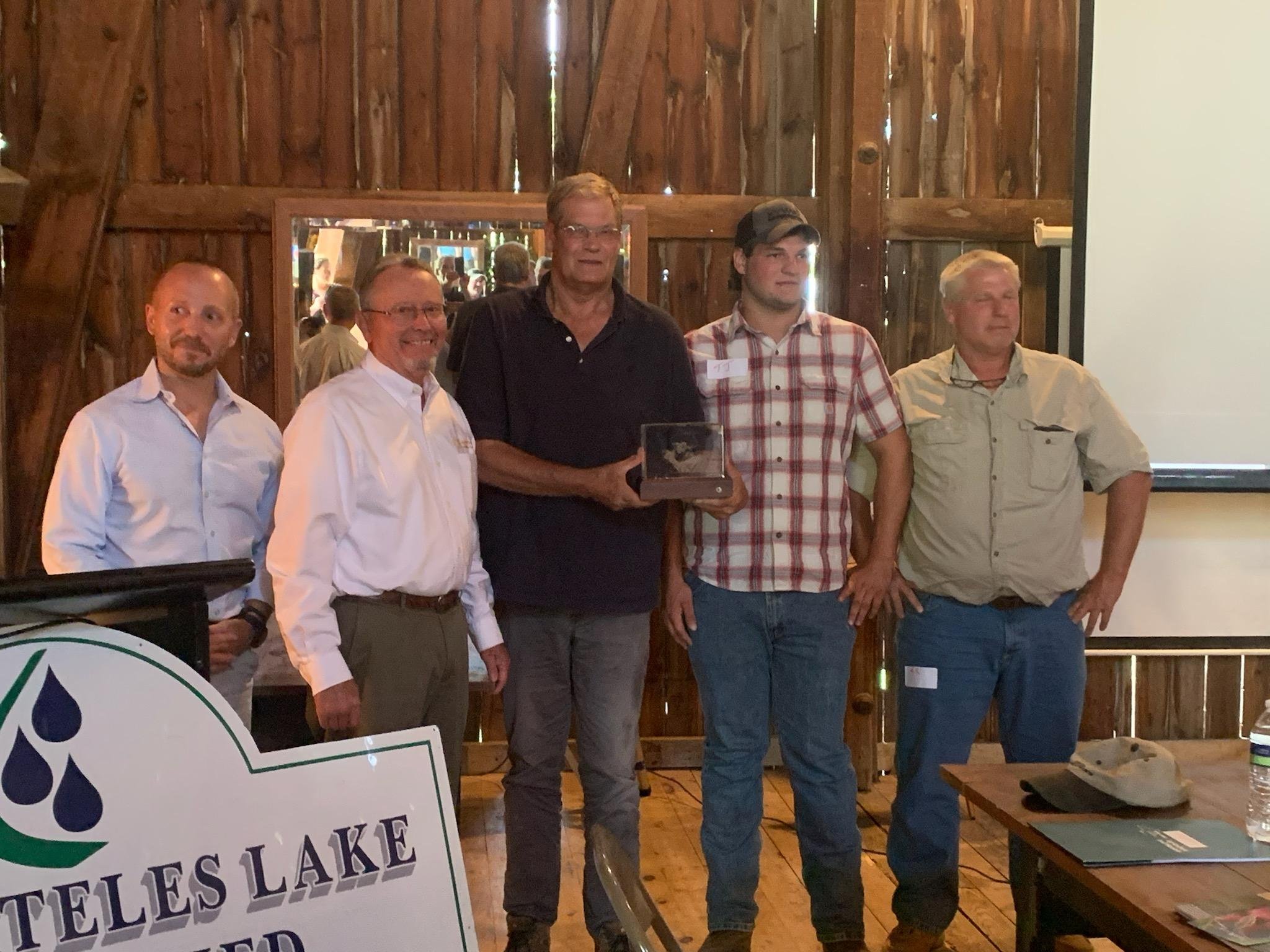Skaneateles Lake Watershed Agricultural Program (SLWAP)
*New: Skaneateles Lake Watershed Agricultural Program Progress Report - March 2024 - February 2025
Farmers in the Skaneateles Lake Watershed voluntarily participate in the City of Syracuse’s (City) Skaneateles Lake Watershed Agricultural Program (SLWAP). The program was established in 1994.
The City of Syracuse has invested $21 Million into farm planning and BMP implementation to maintain the City’s Filtration Avoidance Waiver with NYS Department of Health. The City has invested $14.7 Million of their own funding and used that funding to leverage an additional $6.3 Million in grant funding. For more on funds invested in SLWAP, view the pie chart of Operating Costs from January 1994 through February 28th 2025 and pie chart of SLWAP Implementation Costs from January1995 through February 28th 2025.
Whole Farm Plans (WFP) / Best Management Practices (BMP) program has been implemented with local farm operators to incorporate methodologies for the Whole Farm Planning approach to source protection on farms in the watershed. Activities undertaken in the program include:
Reviewing existing BMPs for their applicability to watershed pollution control objectives;
Working with farmers to prepare WFP’s, and implementing those plans;
Establishing a voluntary WFP/BMP Program for the entire farm community within the watershed; and
Ensuring proper operation and maintenance of those practices.
Agricultural practice environmental degradation control has been critical for meeting the City’s filtration avoidance criteria under the Federal Surface Water Treatment Rule and the New York State Filtration Rule. Farming is a preferred land use, with significant long-term environmental benefits to the watershed, and the City has taken all appropriate steps to support it.
The rules and regulations adopted by the City have purely water quality perspective and called for all farm practices to conform to standards set forth by the USDA NRCS and the NYS DEC in agricultural BMP manuals. The City established an Ad Hoc Task Force (1992-1994) and made on-site visits to the New York City Watershed Program. These two actions convinced the City of Syracuse and the farm community that the voluntary cooperation of the farm operator, would be far more beneficial for both water quality protection and the viability of the agricultural industry in the watershed than would adherence to watershed rules and regulations. In the beginning of the program, 67 farms participated. Today, due to retirements, etc., there are 42 farms in the watershed. 37 of these farms actively volunteer to participate in the SLWAP.
Celebrating 25 Years (1994 - 2019)! Check out an article summarizing the 2019 SLWAP Annual Meeting and 25th Year Celebration!
To learn more about the history of the SLWAP, please visit the Onondaga County Soil and Water Conservation District website or Cornell Cooperative Extension Onondaga County website.
SLWAP Agricultural Spill Response Vehicle
Group picture for SLWAP’s 25th Year Celebration
Since 1994, the City’s watershed ag program team has planned and implemented Best Management Practices (BMPs) on 60 farms who have volunteered to participate in the City of Syracuse’s SLWAP. Today, due to retirements, etc., there are 42 farms in the watershed. 37 of these farms actively volunteer to participate in the SLWAP. Read more about the BMPs that local watershed farmers have implemented.
Onondaga County Soil and Water Conservation District received funding from Round 29 of the Agricultural Non-point Source Abatement and Control Program. These projects focus on implementation of agricultural water quality Best Management Practices (BMPs). Read more by clicking on the announcement here.
Waste Ag Tire Recycling Project: Click here to read an article about the 2021 recycling effort!
Several partners (Fish and Wildlife, SLWAP, and the City of Syracuse) recently completed the Shotwell Brook Stormwater Attenuation Project. Click here to read an article about the project and check out some photos showing before, during and after the project.
The Shotwell Brook stormwater attenuation project involved the creation of a 1.05 acre constructed wetland on abandoned agricultural land with an extensive floodplain allowing for over 1.9 million gallons of storage during high flow stream discharge events.
The primary goal of this conservation practice is to significantly reduce sediment transport to Skaneateles Lake. High intensity storm events have historically resulted in high volume turbid discharges at the tributary outlet resulting in significant sediment plumes in Skaneateles Lake. Improving water quality within the Shotwell Brook Watershed is of high priority due to its close proximity to one of the City of Syracuse’s drinking water intakes.
2019 Environmental Steward of the Year: At the2019 SLWAP Annual Meeting and 25th Year Celebration, the City of Syracuse Department of Water’s “Watershed Agricultural Program” was recognized as the Environmental Steward of the Year.
Other Programs
Skaneateles Lake Watershed farm operators are also enrolled or participate in the following programs:
NYS DEC Concentrated Animal Feeding Operation (CAFO): A CAFO is an animal feeding operation (farm) that meets certain animal size thresholds and that also confines those animals for 45 days or more in any 12-month period in an area that does not produce vegetation. New York State has roughly 500 CAFOs, the majority of which are dairy farms with 300 or more cows and associated livestock operations. Farms that are designated CAFO must choose between the EPA’s National Pollution Discharge Elimination System (NPDES) permit or NYS’ Pollution Discharge Elimination System (SPDES), which is an NPDES-approved program.
NYS Department of Agriculture and Markets (DAM) Agricultural Environmental Management (AEM) program: The New York State Agricultural Environmental Management (AEM) program is a partnership of state, federal, and local agencies, conservation representatives, private sector businesses, and farmers. It has been recognized and bolstered by AME legislation proposed by Governor Pataki and passed by the Senate and Assembly in June 2000. The flexibility of the AEM program allows the partners to address both statewide and specific local water quality needs. The local delivery of AEM along with state funding support has resulted in participation approaching 7,000 farms statewide.
NYS Department of Agriculture and Markets (DAM) Grown and Certified program: New York State Grown & Certified is the first statewide, multi-faceted food certification program designed to strengthen consumer confidence in New York products, address food product labeling, and assist New York farmers so they can take advantage of the growing market demand for foods locally grown and produced to a higher standard. New York State Grown & Certified is open to New York producers who adhere to the best practices in safe food handling and environmental stewardship. It is currently available to New York State producers or processors of produce, dairy, eggs, beef, poultry, pork, shellfish, Christmas trees, maple, cut flowers, craft beverage ingredients, wine, spirits, beer and cider.
Sustainable Award Winning Farms in the Watershed!
There are three sustainable award winning farms in the Skaneateles watershed!
McMahon’s E-Z Acres (2018) - Check out a video about their sustainability practices!
Young’s Twin Birch Dairy (2020) - Read more in the news release and check out a video about their award winning work!
Greenfield Farms (2022) - Greenfield Farms was the recipient of the 2022 Leopold Conservation Award. Read more about their award and all the sustainable practices they have implemented over many years. You can also watch a video describing the conservation practices that the farm has undertaken.
Click here to view the Skaneateles Lake Watershed Agricultural Program Whole Farm Plan Implementation Progress map of best management practices in larger pdf format.
Best Management Practices (BMPs) that have been constructed on farms in the watershed










